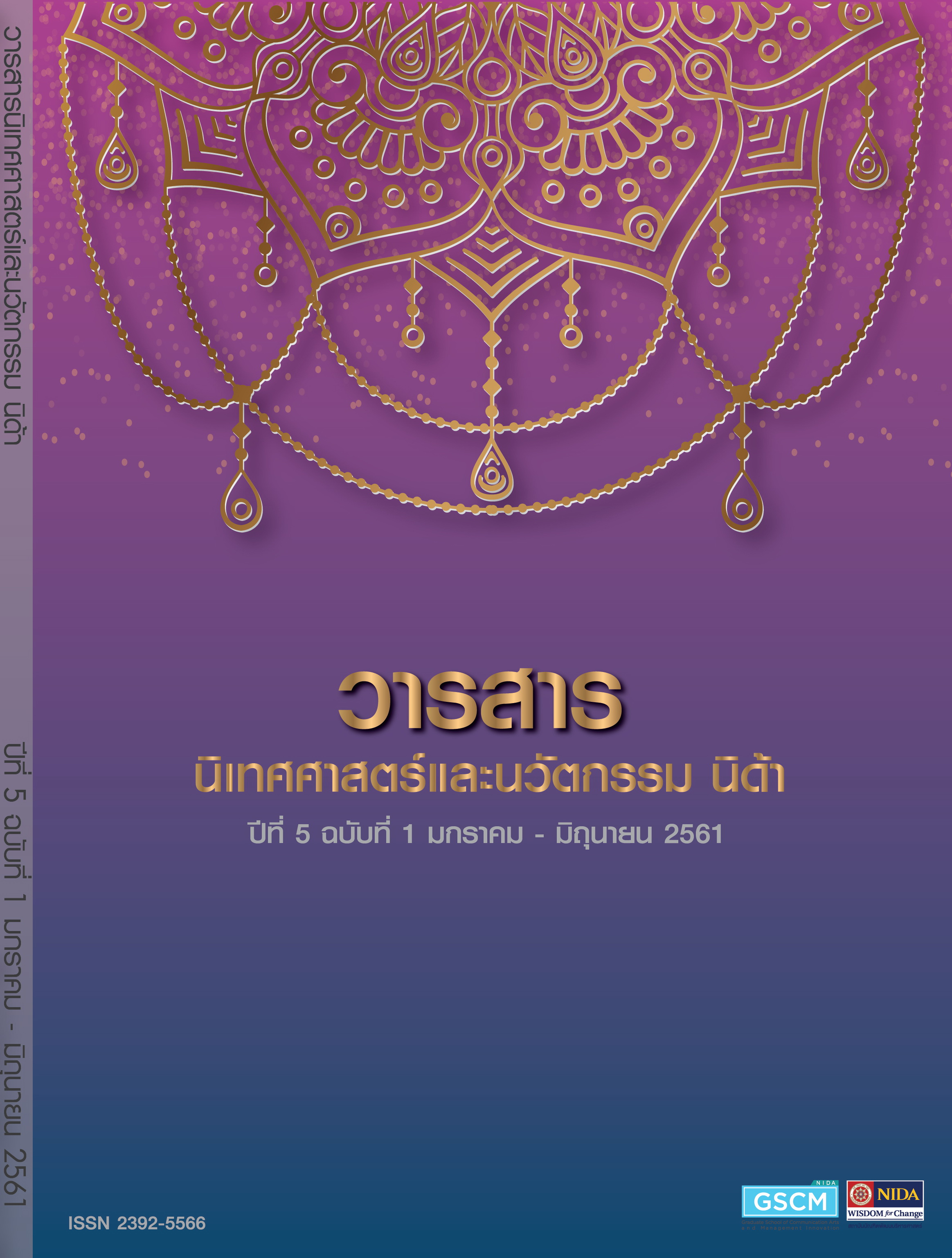The Comparison of Teaching Approaches for Media Literacy: Case Study of Assumption University Student
Main Article Content
Abstract
This research presents the comparison between 3 teaching approaches to find the most effective teaching approach and create guideline for choosing teaching approach for media literacy education, to ultimately improve the level of media literacy in Thai youth. The approaches being compared are the 100% lecture-based approach, the 50% lectures-based and 50% activity-based, and the 100% activity-based approach. The 50% lecture-based and 50% activity-based is expected to be the most effective teaching approach.
This research study is an experimental research which was conducted on Assumption university students from Communication Arts faculty. Participants were divided into 3 groups, then each group received different treatments according to the teaching approaches selected in this study. To compare the effectiveness of each approach, participants had to do the pretest and posttest, to measure their level of media literacy. The test results were compared between each group and analyzed using descriptive statistic.
The overall result indicates that the most effective teaching approach is the 100% activity-based approach. However, the most effective way to create teaching approach for media literacy is through customization. There are factors to be considered before planning media literacy class; time duration, student’s preexisting media literacy knowledge and social media usage rate, to achieve the most effective result.
Article Details
ข้อความและความเห็นในวารสารนิเทศศาสตร์และนวัตกรรม นิด้า เป็นของผู้เขียนแต่ละท่าน มิใช่ของคณะนิเทศศาสตร์และนวัตกรรมการจัดการ สถาบันบัณฑิตพัฒนบริหารศาสตร์
References
Armstrong, P. (2018). "Bloom’s Taxonomy." Retrieved May 18, 2018, from https://cft.vanderbilt.edu/guides-sub-pages/blooms-taxonomy/.
Association, N. A. f. M. L. E. (2007). Core principles of media literacy education in the United States.
Cyndy, S. and R. Faith (1999). "Basic ways to integrate media literacy and critical thinking into any curriculum." Retrieved March 29: 2012.
Elizabeth, T. and J. Tessa. (2004). "Media literacy—A national priority for a changing world." American Behavioral Scientist 48(1): 18-29.
Elizabeth, T. and J. Tessa. (2008). Literacy for the 21st Century: An Overview and Orientation Guide to Media Literacy Education. Theory CML MedicaLit Kit, Center for Media Literacy.
Karuchit, W. and C. Kongdee. (2012). "The Survey of Media Literacy Education in Higher Education in Thailand." Warasansat 5(3): 128-148.
Korcharoen, M. and N. Siripunyathanakij (2016). "Communication Literacy in Digital Age of Citizens in Bangkok." Dhurakij Pundit Communication Arts Journal 2.
Media, C. S. (2012). "Our K-12 Digital Literacy and Citizenship Curriculum." Retrieved 13 August, 2017, from https://www.commonsensemedia.org/sites/default/files/uploads/pdfs/curriculum-overview_0.pdf.
Meenin, S. (2015). Media Literacy and Facebook Literacy Behavior. (Master Degree), Chulalongkorn University.
Thailand, K. W. (2016). "Media Trend in Every Platforms and Media Consumption Behavior of Thai people in 2016." Retrieved 13 August, 2017, from https://www.marketingoops.com/reports/behaviors/kantar -worldpanel-media-research-2016/


